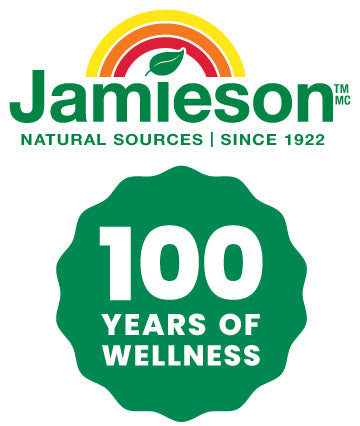Did you know that skin cancer is the most common cancer in Canada? UV rays from the sun increase the risk for skin cancer. The ComPARe study, a new study funded by the Canadian Cancer Society, has found that about 4 out of 10 cancer cases can be prevented through healthy living and habits that protect the health of Canadians. The study highlights the following for sun and UV exposure - and the results may surprise you:
- 3 out of 10 Canadian adults have had a painful sunburn in their leisure time
- 6 out of 10 Canadian adults lie in the sun intentionally to tan their skin
- About 65% of melanoma cases due to UV radiation can be prevented.
- In 2015, 4,300 cancer cases in Canada were due to sun exposure
- If the trend continues, the number of new melanoma cases due to UV rays will increase from 4,300 to 6,100 in 2042
- Together, we could prevent about 12,000 melanoma cases by 2042 if more Canadians practised sun safety
About skin cancer
UV rays can cause sunburns, premature aging, cataracts and skin cancers. Being in contact with UV, from the sun or indoor tanning equipment, is the leading factor for developing skin cancer
There are 2 types of skin cancer: melanoma and non-melanoma. Most cases of melanoma skin cancer are caused by contact with UV radiation from the sun. It could be from being in the sun on and off during your lifetime or being in the sun early in your life. Those who have had at least one blistering sunburn as a child or teenager have a higher risk of developing melanoma later in life. The more sunburns you have had, the greater the risk of melanoma.
Most cases of non-melanoma skin cancer are caused by contact with UV from the sun over a long time.
People who work outside, such as farmers, have a higher risk of developing non-melanoma skin cancer because they are outdoors for long periods. People who live at high altitudes or in areas with year-round, bright sunlight also have a greater risk of developing non-melanoma skin cancer.
Learn more about other risk factors for melanoma and non-melanoma skin cancer.
Prevention in 6 Easy Steps
While it is the most common cancer, skin cancer is also one of the most preventable by being sun safe. The six best ways to be sun safe are:
- Check the UV Index daily
On days when the UV Index reaches 3 (moderate) or more, you need to be extra careful to protect your skin. Try to reduce your time in the sun between 11 a.m. and 3 p.m. – when the sun’s rays are at their strongest – or any time of the day when the UV Index is 3 or more.
2.Seek shade
If your shadow is shorter than you, find some shade because this means the sun’s rays are at their strongest. Sit under a tree at the park or under an awning on a restaurant patio. Bring an umbrella for on-the-go protection. If you can see the sky from your shady spot, you still need to cover up with clothing, a hat, sunglasses and sunscreen. UV rays can reach you in the shade by reflecting off the surfaces around you.
3. Cover Up
Did you know that clothes protect you better than sunscreen? Cover up as much of your skin as you can with clothing that is made from tightly woven fabric. Or look for clothing that is labelled with a UPF (UV protection factor). Wear a wide-brimmed hat that covers your head, face, ears and neck.
4. Wear sunglasses
Sunglasses don’t have to cost a lot to work well, but make sure you choose close-fitting ones with UVA and UVB protection in a wraparound style. The label might have “UV 400” or “100% UV protection”.
5. Use sunscreen properly
Sunscreen absorbs UV rays and prevents them from penetrating the skin. Apply a broad-spectrum sunscreen with an SPF of 30 or higher. It’s important to apply a generous amount of sunscreen to any skin not covered by clothing. If you’re going in the water, make sure your sunscreen is also water-resistant. Remember, use sunscreen along with shade, clothing and hats, not instead of them.
6. Don’t use indoor tanning beds
There’s no safe way to get a tan. Tanned skin is damaged skin. Don’t use indoor tanning beds or sun lamps.
How Can I Get Enought Vitamin D, Safely?
Vitamin D is needed for healthy bones and muscles, especially in children and the elderly, and can even help boost immune health There is evidence that vitamin D may reduce the risk of some types of cancer, particularly colorectal and breast cancers. However, unlike other nutrients, the body produces vitamin D when the skin is exposed to sunlight. Adults should get roughly 600-1,000 IU of vitamin D per day, but the amount of sun exposure needed to produce enough vitamin D depends on:
- age
- diet
- skin colour
- where you live
- how strong the sun is?
Getting vitamin D from your diet (many foods are fortified with vitamin D) or by taking vitamin supplements is safer than UV-ray exposure. Vitamin D can be found in small amounts in a few foods, including fatty fish such as herring, mackerel, sardines and tuna. To make vitamin D more available, it’s added to some dairy products, juices and cereals, which are then labelled as “fortified with vitamin D.”
For more tips on sun safety, visit www.cancer.ca/sunsafety or contact the CCS Cancer Information Service, their toll-free help line, at 1-888-939-3333.




